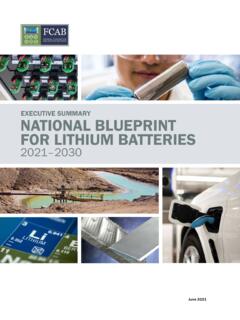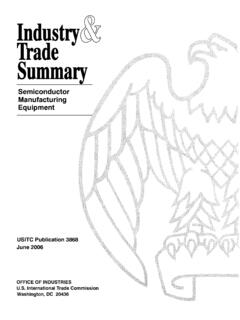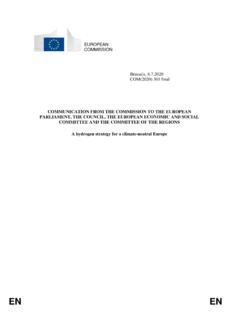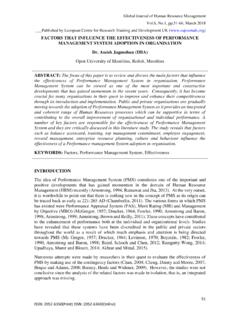Transcription of Literature Review Educational Technology
1 Literature Review Educational Technology Christie Blazer, Supervisor Research Services Office of Assessment, Research, and Data Analysis Miami-Dade County Public Schools 1500 Biscayne Boulevard, Suite 225. Miami, Florida 33132. May 2008. 33. The School Board of Miami-Dade County, Florida Mr. Agustin J. Barrera, Chair Ms. Perla Tabares Hantman, Vice Chair Mr. Renier Diaz de la Portilla Ms. Evelyn Langlieb Greer Dr. Wilbert Tee Holloway Dr. Martin Karp Ms. Ana Rivas Logan Dr. Marta P rez Dr. Solomon C. Stinson Dr. Rudolph F. Crew Superintendent of Schools Ms. Antoinette Dunbar, Deputy Superintendent Curriculum and Instruction Ms. Gisela Feild, Administrative Director Assessment, Research, and Data Analysis Mr.
2 Dale Romanik, Director Research Services Literature Review . Educational Technology . At A Glance There is a growing consensus among educators and the general public that Technology should play a more integral role in students' education. However, the question of whether the introduction of Technology into the classroom has a positive impact on teaching and learning is still under intense debate within the Educational community. This Literature Review discusses the advantages and disadvantages of integrating Technology into the curriculum and provides strategies researchers have concluded contribute to the success of Technology programs. Research conducted on Technology programs is reviewed.
3 Although these studies have produced inconsistent findings, they do suggest that the types of activities students engage in are more important than the frequency with which they use computers. Finally, the status of Educational Technology in Miami-Dade County Public Schools and statewide is summarized. Over the past 20 years, Technology has transformed society and changed many aspects of daily life. The proliferation of Technology has led to a growing consensus among educators and the general public that it should play a more integral role in students' education (Culp et al., 2003; CEO Forum on Education and Technology , 2001; Fouts, 2000; Johnson, 2000). Schools' use of Educational Technology has continued to steadily increase over the years, as educators introduce a variety of efforts to integrate Technology into the curriculum.
4 In 2003, only 4 percent of school districts had implemented one-to-one computer programs (in which each student was given a computer for his or her own use). By 2006, more than 24. percent of school districts were in the process of transitioning to one-to-one programs. In 2006, the America's Digital Schools report estimated that over 19 percent of all student devices were mobile and predicted that this percent would increase to 52 percent by 2011 (The Greaves Group, 2006). In 2008, there were, on average, students for every instructional computer in the nation's public schools, compared to students per computer in 1999, and 125 students per computer in 1983 (Education Week, 2008; Glennan & Melmed, 1996).
5 Educational Technology is not restricted to individual computer use. It can involve other equipment and applications, such as videoconferencing, digital television (allowing students to interact with programs at their own pace), electronic whiteboards, and digital cameras (Jackson, 2008; Education Week, 2007;. McCampbell, 2002; Marshall, 2002). Educators have struggled with decisions regarding what types of Technology to use and how to use them (Culp et al., 2003). Researchers agree there is not one right . type of Technology or one right way to use it; rather, it should match schools' learning and teaching goals and be appropriate for the students who use it (Sivin-Kachala & Bialo, 2000).
6 Districts and schools implement Technology initiatives for different reasons. Program goals include increasing students' economic competitiveness, reducing inequities in access to computers, raising student achievement, increasing student engagement, creating a more active learning environment, and making it easier to differentiate instruction according to students' needs (Bonifaz & Zucker, 2004). Each Technology is likely to play a different role in students' learning. For example, word processing and e-mail can improve communication skills; database and spreadsheet programs can enhance organizational skills; and modeling software often increases understanding of math and science concepts (Honey et al.)
7 , 1. 2005). Experts have suggested that Technology can enhance learning by providing students with the following opportunities (Honey et al., 2005; Gahala, 2001; Fouts, 2000; Johnston, 2000; Means, 2000): z drilling and practicing with increasingly difficult content;. z accessing a wide variety of information and gaining knowledge from many sources;. z visualizing difficult to understand concepts;. z interacting with data, engaging in hands-on learning, and receiving feedback; and z managing information, solving problems, and producing sophisticated products using tools such as spreadsheets, databases, and word processors. Apple Computer (2005) examined trends in students' use of Technology .
8 They reviewed 30 studies on Educational Technology programs and concluded that students used laptops primarily for writing, taking notes, completing homework assignments, organizing their work, communicating with peers and teachers, and researching topics on the Internet. They tended to use word processing software, web browsers, and e- mail to accomplish these tasks. Those students who used their laptops to complete more complex projects were most likely to use design and multimedia tools, such as presentation software and software for making and editing digital images and movies. Advantages and Disadvantages of Technology Proponents of Educational Technology contend that Technology accommodates individual learning rates and styles and offers access to learning at any time and in any location.
9 They believe that the use of Technology in the classroom provides students with the opportunity to (Jobe & Peck, 2008; Bebell, 2005; Honey et al., 2005; Waddoups, 2004; Gahala, 2001; Healey, 2001): z acquire the technological skills they will need for future employment;. z develop critical thinking, problem-solving, and communication skills;. z collaborate with peers;. z engage in hands-on learning activities; and z receive immediate feedback. Advocates also claim that teachers benefit from the introduction of Technology into the classroom. Technology gives teachers the ability to tailor instructional materials and assessments to directly address their students'. learning needs; offers access to more authentic material to assist in the development and delivery of lessons.
10 And provides additional sources of information for their students to draw upon in the classroom (Dunleavy et al., 2007; Waddoups, 2004; Healey, 2001). On the other hand, critics list a host of reasons why Technology should not be emphasized in schools (Dunleavy et all, 2007; Valdez, 2005; Jackson, 2004; Cooley, 2001; Northwest Regional Educational Laboratory, 2001; Wright, 2001; Blumenfeld et al., 2000; Weiner, 2000; Oppenheimer, 1997). For example, they contend: z Some educators have endorsed Technology indiscriminately, as if the use of computers automatically produces quality teaching and learning experiences. z Too many schools emphasize Technology over learning. For example, the ability to create an attractive document doesn't mean that students have a greater understanding of concepts in the core academic areas.















